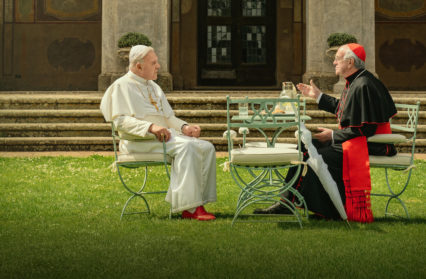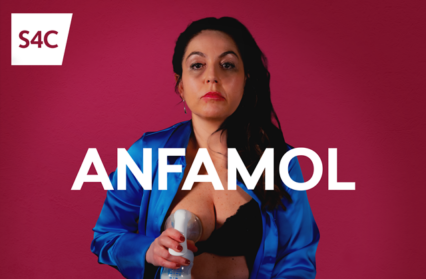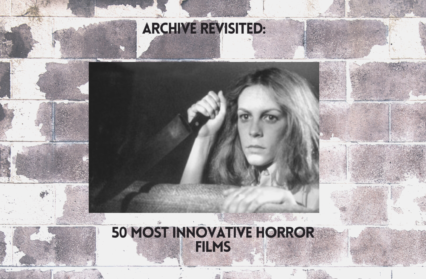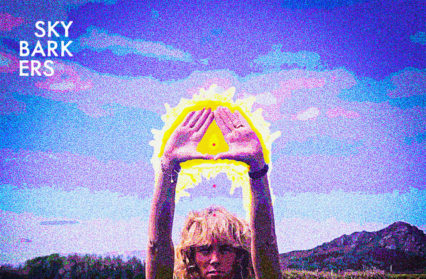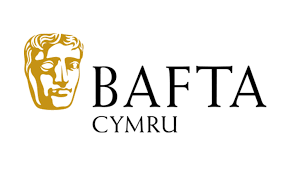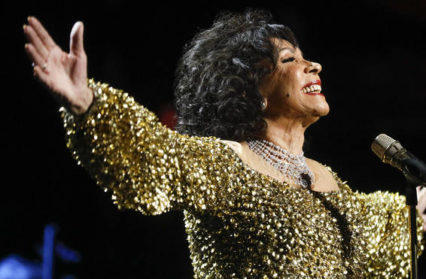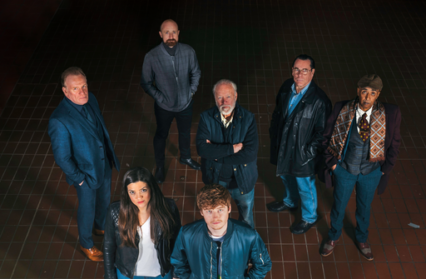Marine Furet reviews The Two Popes, the Oscar-nominated Netflix original movie which depicts a fictional Cardinal Bergoglio becoming a Pope.
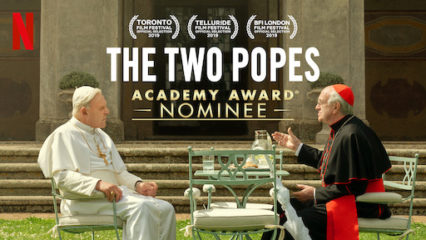
“A buddy movie at the Vatican”. The Two Popes, Fernando Meirelles’s latest film recently released on Netflix, has been giving viewers and critics all sorts of warm and fuzzy feels since its first airing in November. Hailed as a bromance hit, it has been reaping nominations for prestigious awards for its stellar cast and script, enjoying its success as a quirky Christmas season film in papal garb. The Two Popes charts the fictional meeting between conservative Pope Benedict XVI and then-cardinal Jorge Mario Bergoglio, now Pope Francis. The story begins with the election of the former to the rank of Pope. Its crux lies in an intense discussion between Ratzinger and his successor seven years later, after the latter’s attempt at tendering his official resignation from his position as Archbishop of Buenos Aires. The encounter comes about in a tense context for the Catholic Church, besmeared with a worldwide paedophilia scandal that has been shaking the institution to its venerable core ever since. While Bergoglio’s intention to resign and the sexual scandal are real, the popes’ meeting and subsequent discussion are both invented, although heavily based on the two protagonists’ stated positions.
Anthony Hopkins’s Pope Benedict is an old weary man, isolated and in poor health but held by a steadfast conviction in the immutability of the Church, even at the cost of alienating an increasing portion of its followers. Facing him is Jonathan Pryce as future Pope Francis, portrayed as an unconventional eccentric who shows up at the Vatican with his shoelaces undone. Bergoglio is a tango dancer who plays football and can whistle along to Abba’s greatest hits. Ratzinger, on the other hand, seems out of touch, fenced-in in his beautiful empty villa on top of the Vatican hills. Benedict XVI opposes the spirit of reform which he sees as ‘Anything goes’ propaganda; Bergoglio holds more liberal positions on topics such as marriage amongst priests and homosexuality and stands as the Pope’s most ferocious critic. As the film progresses and the old men’s complicity develops, we see them exchange roles somewhat: Ratzinger’s hard outsides melt under the influence of Bergoglio’s affable manners, while the Argentinian’s contempt for conventions is progressively shaken by his desire to protect the Papacy. The two popes even watch football and enjoy a pizza meal together.
While the film begins with a description of the election process that highlights the Catholic Church’s elaborate ceremonials, its relationship with the Sacred is peripheral to the movie’s intrigue, which is more focused on the development of the characters’ ideological and theological differences. The Vatican’s monuments and the complex election process are presented as part of a system of political and social values, rather than as a pretext for an exploration of transcendence. We do get a sense of Ratzinger’s doubts on his calling (although the film never goes as far as to question his faith) but they mostly serve as a foil to Bergoglio’s apparently unshakeable, feelgood faith. A long portion of the narration is dedicated to the Argentinian Archbishop’s character, and particularly to his early career as the head of the Jesuits’ Order in 1970s Argentina and his ambiguous relationship with the military junta in place at the time. Bergoglio’s remorse over his inability to save his friends from the hands of the regime gives texture and depth to his character, culminating in his consecration as the pope of the poor and the exiled. At the end of the film, his intronization speech is cut with some shots of a refugee boat out at sea, an allusion to Pope Francis’s frequent statements on the injustice of the migrants’ fate, reiterated in his latest Christmas speech.
The Vatican is shot in a harsh, white light, which is perhaps the light of faith, but then again, perhaps not? If religion is filmed as a repetitive, mechanistic, ornate ritual, faith is narrated as a process of personal development, complete with future Pope Francis’s temporary stumble in Córdoba following his exile from Buenos Aires. The Popes’ doubts and vacillations are presented as relatable, as is Pope Benedict’s passion for Kommissar Rex. Overall, this is excellent Catholic PR, which carefully eschews the extent of the former pope’s involvement in the scandal (literally silenced in the film), or Francis’s current inability to suppress it. Pryce’s and Hopkins’s performances are flawless, as is the cinematography, dialogue, and pacing. The Two Popes is undeniably well served by Netflix’s impeccable production machinery, which turns one of the world’s oldest and most complex institutions into an appealing story for capitalistic profiteering. At the end of the film, even this stern reviewer could not repress a chuckle at the pope’s cutesie reunion on the papal couch to watch the World Cup. But is this really the film the catholic church needs to save itself? Why, in short, do we need to turn the Popes into personable characters?
The Two Popes is available to watch now on Netflix (Be Aware of subscription costs).
Marine Furet is a regular contributor to Wales Arts Review.


